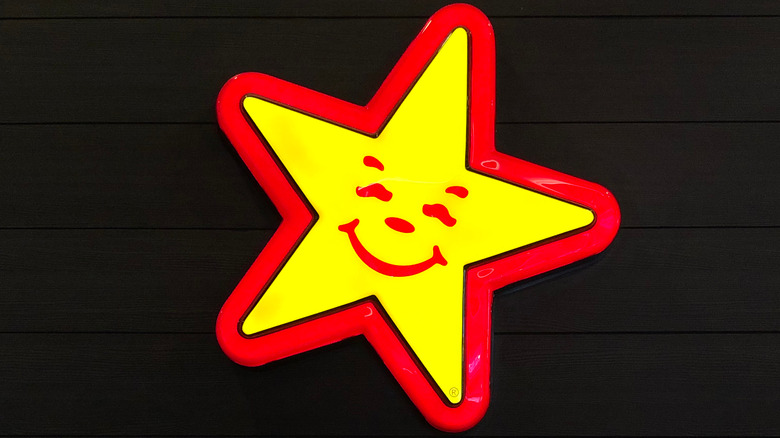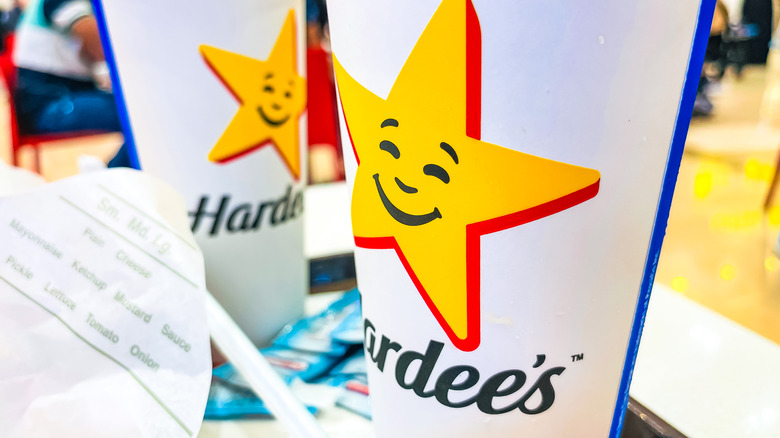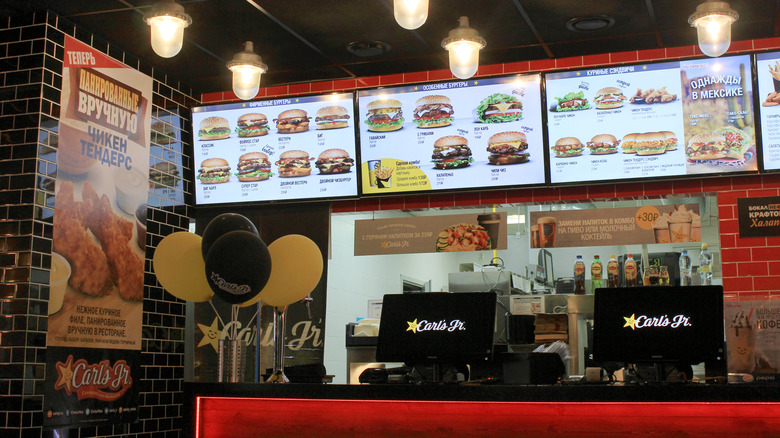These Are The Only Two States With Both Hardee's And Carl's Jr. Locations
Ever notice the similarities between Hardee's and Carl's Jr.? The two chains have nearly identical menus and their branding is essentially the same, per Consumer Reports. However, there's one key difference: their locations. Hardee's are generally found in the Midwest, Southeast, and now the Mid-Atlantic, while Carl's Jr. dominates the West Coast and Southwest. In fact, there are only two states where these brands overlap, smack dab in Middle America. So, how did this strange dynamic come to be?
In 1941, after working on a farm and as a bread wrapper, Carl Karcher decided to buy a hot dog cart with his wife for a couple hundred bucks and enjoyed great success (via Carl's Jr.). After only four years, Karcher opened Carl's Drive-In Barbecue in Anaheim, California, where burgers replaced chili dogs and tamales, per the Orange County Register. He later opened "Junior" Carl's Drive-In Barbecues, where he prioritized the "fast" in "fast food."
Over time, the business expanded, and Carl's Jr. added new menu offerings, such as the half-pound angus beef "better burgers," salad bars, soda fountains, turkey burgers, western bacon cheeseburgers, and even breakfast selections. By the end of the 20th century, as noted by Consumer Reports, Carl's Jr. had thousands of locations. Elsewhere, Hardee's was achieving a similar level of success.
Hardee's history
A look at the Hardee's website tells a fairly straightforward story. It states the company has been serving up tasty food, like chicken tenders, for more than six decades. This all began in 1960 when Wilber Hardee opened the first Hardee's location in North Carolina, offering diners 10-cent fries, 15-cent burgers, and 20-cent milkshakes.
From there, the company quickly grew and added items like biscuits and roast beef sandwiches to its menu. By the 1970s, there were hundreds of Hardee's franchises, and by the '90s, there were thousands more. These days, according to Consumer Reports, Hardee's locations are scattered across multiple countries (although you'll never find a Hardee's in Canada). Success, plain and simple!
Is that all there is to the backstory of Hardee's, though? Far from it. As reported by Our State, Wilber Hardee's relationship with his namesake company was complicated. He was a serial restaurateur who took inspiration from McDonald's to create Hardee's, which turned out to be an instant hit.
Unfortunately, Hardee stepped away from it all not long afterward, leaving the company in the hands of his two business partners, who allegedly swindled him. Those individuals franchised Hardee's — and the rest is history. Hardee was brought back into the mix during the early 2000s, but by then, a new parent company, which had bought Hardee's in the late '90s, was in charge. What company was that?
CKE Restaurants
The new top dog at Hardee's was CKE Restaurants, Inc. However, this was not some third company added to the mix. As explained by Consumer Reports, in 1964, Karcher was doing so well that he incorporated his businesses into a single entity, Carl Karcher Enterprises, which acronymically became CKE Restaurants. Originally, Karcher tried other endeavors besides Carl's Jr., which included the Scot's Coffee Shops and Carl's Whistle Stops. Those ventures wouldn't last, though, with some eventually becoming Carl's Jr. locations.
It wasn't until 1997, when Hardee's was beginning to see business slow down, that CKE attained its East Coast peer, expanding itself by looking to others. Carl's Jr. and Hardee's then exchanged recipes and design philosophies, sharing worldwide acclaim. Yet, Carl's Jr. is still only in the Southwest and West Coast, while Hardee's endures in the Mid-Atlantic, Midwest, and Southeast.
So, where do the locations of both Hardee's and Carl's Jr. overlap? Only in Oklahoma and Wyoming. Two similar fast-food burger joints — one originating out West and the other generally east of the Missouri River — enjoyed parallel success before joining forces. Now, they keep all but the Sooner State and Cowboy State divided between them in a display of respectful solidarity. Sometimes, all that's in a name is regionality and history.


